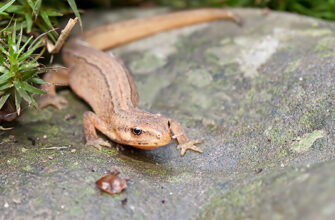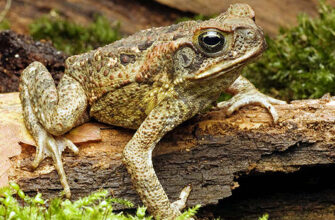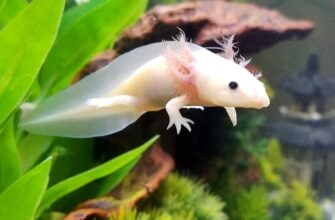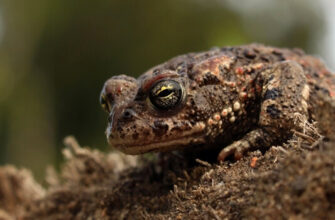The lake frog is the most typical representative of the real frog family. To meet him, residents of some cities simply need to leave the city to any body of water. This amphibian is easy to distinguish by a characteristic strip along the head and spine. The lake frog is the most widespread species of the group. They most often live where the water temperature reaches at least 15 degrees Celsius. Let’s talk more about this type of frog.
Origin of the species and description
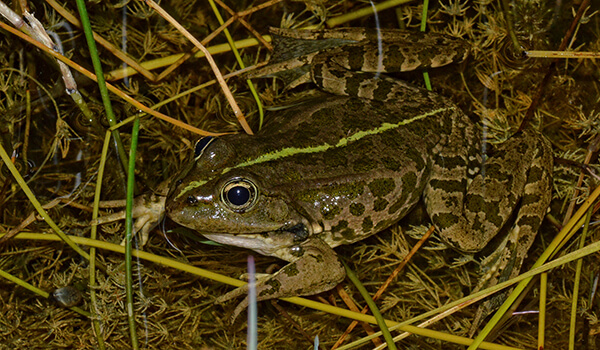
Photo: Lake frog
The first mention of the lake frog appeared in 1771. The Latin name Pelophylax ridibundus at that time was given to this species by the German scientist-encyclopedist Pallas Peter Simon. This man discovered many new species of the most diverse classes of animals. Some representatives of the fauna were even named after him.
The lake frog is the largest amphibian species in Russia. Most often they can be found in reservoirs of anthropogenic origin. According to official data on the territory of our country, this type of frog appeared in 1910 and was mistakenly described as a giant frog – Rana florinskii.
Appearance and features
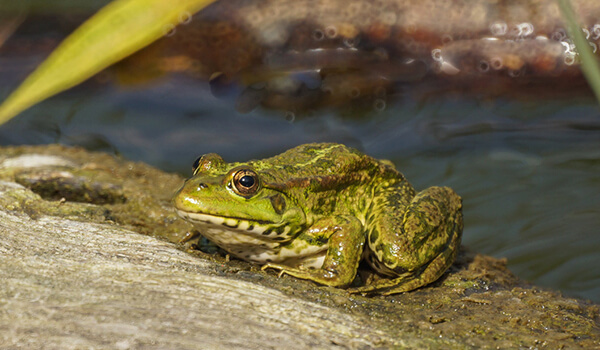
Photo: Lake Frog
The lake frog in its structure has an elongated skeleton, an oval skull and a pointed muzzle. The appearance of the lake frog is not much different from other representatives of this family. If you look closely, you can see that the lower part of the body, painted gray or slightly yellowish, also has numerous dark spots. From above, the frog’s body has a color similar to its abdomen. The eyes of individuals are mostly golden in color.
Among the features of this species, one can note an impressive mass, which sometimes reaches 700 g. Compared to other frogs, this number makes it clear that the lake frog is not one of the light representatives in your family.
Where does the lake frog live?
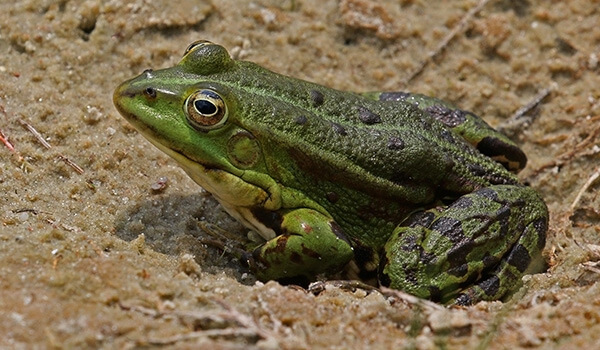
Photo: Lake Frog
The lake frog has become widespread in different parts of the world. At the moment, in addition to Russia, it can be found in some parts of Europe, Asia, and also in North Africa.
Among the most densely populated places in Europe, they usually distinguish:
- Crimea;
- Kazakhstan;
- Caucasus.
In Asia, marsh frogs are most common near Kamchatka. This is due to the fact that geothermal springs can often be found on the peninsula. The temperature in them reaches about 20 degrees Celsius, and this, as you know, is a very favorable factor for the life of this species.
On the territory of our country, the lake frog can be found with a particularly high probability if you live in Tomsk or Novosibirsk. In such rivers as the Tom and Ob, they are one of the main inhabitants.
What does the lake frog eat?
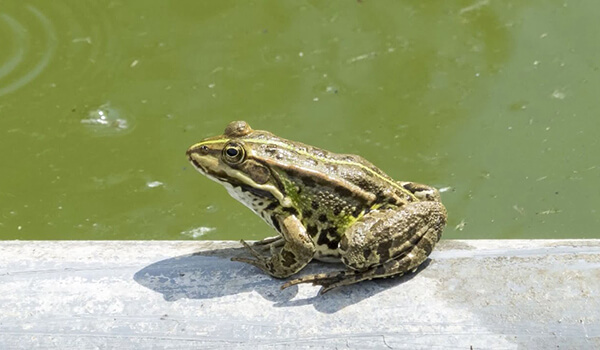
Photo: Lake Frog
The diet of this species does not differ in any way from the family as a whole. As their food, lake frogs prefer dragonfly larvae, water beetles, and mollusks. If the food above is in short supply or absent, they can eat a tadpole of their own species or a fry of some river fish.
In the next paragraph, we will mention the dimensions of the amphibian in question, which are one of the main distinguishing features from other species of the family . Thanks to them, the lake frog can sometimes attack small mammals such as voles or shrews, small birds, chicks and young snakes.
Character and lifestyle features
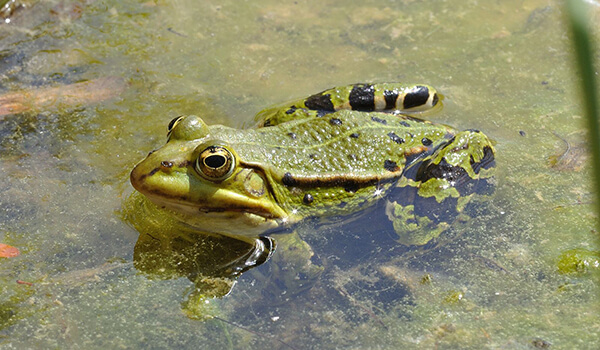
Photo: Lake frog
The lake frog is the largest species of amphibian in Eurasia. In nature, you can find individuals whose dimensions reach a length of more than 17 centimeters. It is interesting to note that in this species, females are often much larger than males.
Like all frogs, the lake frog lives mainly on the banks of water bodies. Due to its coloring, it can easily go unnoticed in all weather conditions. Its characteristic stripe on its back, which is often bright green, helps to camouflage itself on the stems of aquatic plants.
For life, lake frogs prefer water bodies with a minimum depth of 20 centimeters. Most often, this species can be found in drainless water bodies – lakes, ponds, ditches, and so on.
The lake frog is active almost around the clock, so if it notices danger, it immediately reacts and hides in the water. It lives on the banks in the afternoon, as at this time it hunts. During the winter, the lake frog can remain active as long as the water temperature does not change much.
Social Structure and Reproduction
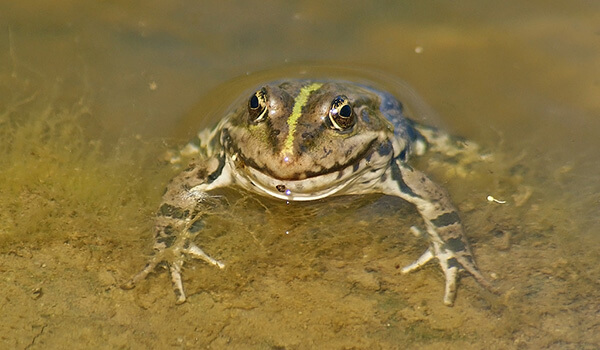
Photo: Lake frog
It is interesting to note that the reproduction of the lake frog, unlike other amphibians, is not accompanied by migration. Being heat-loving, males show their first readiness for mating when the water temperature reaches from +13 to +18 degrees. Singing begins, which is due to the expansion of the corners of the mouth. Additional sound amplification is given to them by special hollow balls – resonators that inflate when croaking.
Frogs gather in groups, and males are not very demanding, so they can capture one female in a group or even confuse her with something inanimate.
Spawning will occur only in sufficiently warm and protected conditions. One frog can lay up to 12,000 eggs. The entire breeding season lasts a month.
Numerous tadpoles spread throughout the reservoir, feeding on algae and waiting for their turn of puberty, which occurs a year or more after their metamorphosis.
Natural enemies of the lake frog
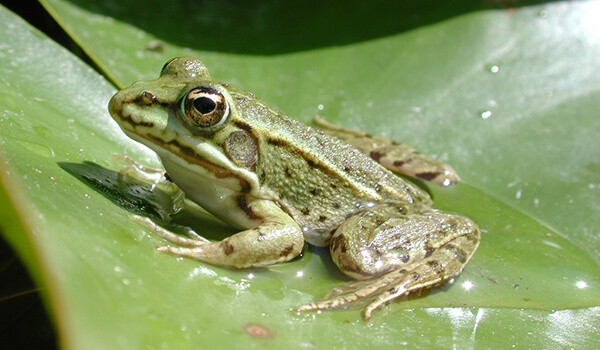
Photo: Lake frog
Despite the fact that the lake frog has a large size, it often becomes a victim of other animals. Among the worst enemies of this species, it is customary to single out the common snake, since they constitute their main food supply.
The lake frog is also often preyed upon by birds of prey and other mammals. For example, it can be foxes, otters or jackals. No less dangerous enemy for the lake frog is the stork or heron. Quite often you can see a picture of how they willingly eat them, catching them from a reservoir. Large fish also eat frogs. These fish include catfish, pikes and zander.
Population and species status
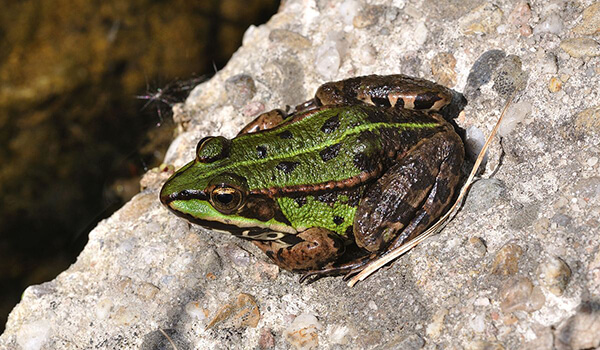
Photo: Lake Frog
The lake frog has a relatively high population and lives in forest-steppes, mixed and deciduous forests, steppes, deserts and semi-deserts, choosing stagnant or flowing waters, streams, rivers and lakes in these natural zones. Unfortunately, in some areas these amphibians are popular. A threat is a person who catches individuals for study, experiments or their use in medicine.
Lake frog tadpoles serve as food for many inhabitants of the reservoir. At the same time, adult males and females eat fish, thereby affecting the ichthyofauna of reservoirs. Also, representatives of this species prefer to eat lizards, birds, snakes and even mammals. Thus, the lake frog plays an important role in the food chain.
In conclusion, I would like to say that the lake frog, although one of the largest species of the family of real frogs, still needs protection. This just explains its color, which often serves as a good disguise for this species. Although the lake frog is a very common species, it is often captured for use in education, medicine and science.

